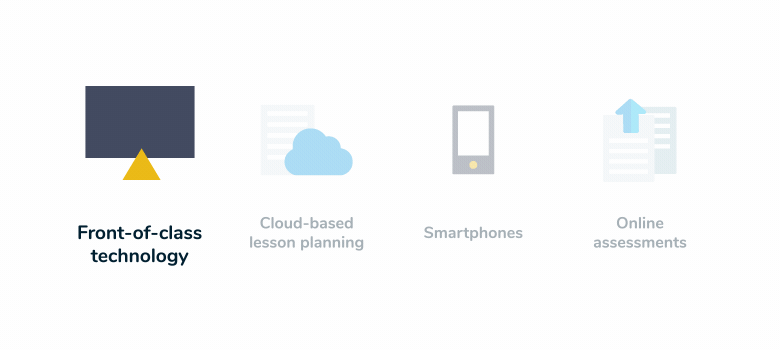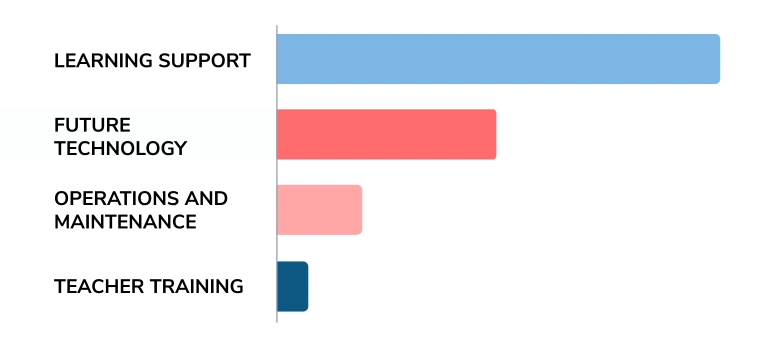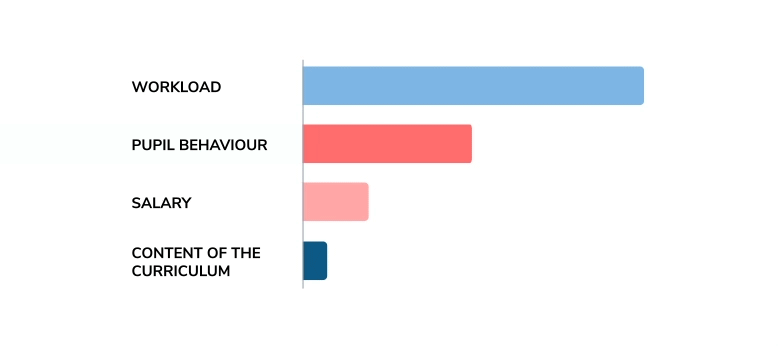Is #EdTech helping educators do their job better? The State of Technology in Education Report 2019/20

The State of Technology in Education is back! Now in its fourth iteration, the report highlights the complexities of the educational landscape in the UK and Ireland.
9 in 10 educators agree tech is now integral to education…
…in 2018/19, just over half agreed.

So, how can you leverage tech whilst ensuring it still remains appropriate for the learning situation?
See how other educators are doing it — and how far the use of tech in the classroom has evolved over the last four years.
It’s all here, in (Part 3) The State of Technology in Education 2019/20 report:
- 82.7% of educators agree tech helps them do their job better. What are their favourite tools?
- Can technology improve behaviour? Find out how many teachers agree.
- 60.9% of respondents say technology enables students to better learn soft skills. Where else can it add value?
After salaries, what will schools spend the most on in the coming year?

Schools’ second funding priority has leapt dramatically from 2018/19, staff salaries often take the lion’s share of budget, but our survey has revealed some fierce competition for the remaining funds…
Are schools spending enough on training? Does your school value training and development?
While there are many reasons to be positive, there are plenty of challenges to overcome.
As ever, conflicting priorities and budgetary pressures act as stressors on SMTs, while workload weary teachers are struggling to find time to complete extra-curricular tasks like training.
One clear positive from this year’s report, though, is the fact that technology is playing a bigger role than ever: EdTech is mostly regarded as essential to giving students the tools they will need to thrive in this digital world
Education is always evolving. And so too are the experiences and opinions of educators. They’re all here — in the State of Technology in Education 2019-20 report.
Now in its fourth year, the report has become one of the education sector’s most eagerly anticipated publications — packed with high impact stats and honest insights.
This year’s report examines the views of over 2,000 educators, including Head Teachers, Heads of Departments, Heads of Year, Teachers, IT and Network Managers, Business Managers and Teaching Assistants from across the UK and Ireland. We asked them about strategic goals, workload and well-being, staff training, budgets, schools’ use of tech and the future of tech in education.
Here are the headline findings:
School strategy
There is less confidence in schools’ strategic visions. Only 51% of respondents believe their school has a clear strategic vision, down 17%. Are schools losing their way?
Less respondents believe their school has a clear strategic vision, with 1 in 10 not actually knowing what their school’s key priorities are for the year ahead. This is despite more respondents than ever (19%) taking an active role in formulating school strategy.

Workload and wellbeing
40% of educators are looking to use tech to collaborate, up from 20%. What are the hurdles to wider adoption?
While schools are doing more than ever to try and improve the situation, there remains a perception gap between SMT, IT managers and teachers.
81% of teachers believe workload is contributing to stress, up 19.1%
Workload is at a critical level for many, and represents the biggest threat to staff retention. 80% of teachers believe workload is contributing to high levels of stress in schools.
Do you know why teachers are leaving schools? For years, we’ve seen budgets threatening the balance of teacher retention. Are we now facing a bigger threat?
So, what’s the biggest threat to teacher retention? In the State of Education in Technology 2019/20 report, we asked teachers the real reason their colleagues quit.
Staff training and budgets
Are schools spending enough on training? Does your school value training and development?
Around a third of all teachers, IT managers and SMT members agree that insufficient funds are allocated to training.
Budgets are being cut for school leaders, but it’s the teachers who are really feeling the pressure that brings.
Check out Part 2 of The State of Technology in Education 2019/20 to find out what frontline staff really think about budgets and training:
- Teacher training has fallen in schools’ list of priorities — less than half of what it was last year.
- Just how many senior leaders think spending on training is at the right level compared to teachers?
- Are you one of the 16.5% of teachers who actually gets adequate edtech training?
Training has fallen down the priority list, perceived to be a priority by less than half of respondents that thought it was last year (31.3% → 12.8%). Edtech training is in high demand, but only 16.5% of teachers say they have adequate edtech training and support.
At the same time, the number of senior leaders who will spend most of their budget on tech has more than tripled in the last year, from 3.9% in 2018/19 to 15.5% in 2018/19: making tech the fourth highest spending priority.
Use of technology
This reflects the fact that there has been a dramatic shift in the perception of the importance of technology in education. Educators (and especially IT managers) strongly believe it helps them to do their jobs better, engage students and improve behaviour. In fact, 9 in ten educators say tech is integral to everyday life and education.
Against a backdrop of constantly evolving tech, consistent pressure and conflicting priorities, it’s a tough time to work in the world of education. Educators need to continually adapt and refine their approaches to keep up and give pupils the best chance to thrive.
But it’s not all bleak. Despite spinning so many plates, there is a consensus among educators that technology helps them to do their job better. With tech rising up the budget priority list, and the SMT doing more to mitigate heavy workloads, maybe next year will see tech based strategies taking some of the pressure off.
For more insights into exactly what your fellow educators think, explore the State of Technology in Education.











Responses